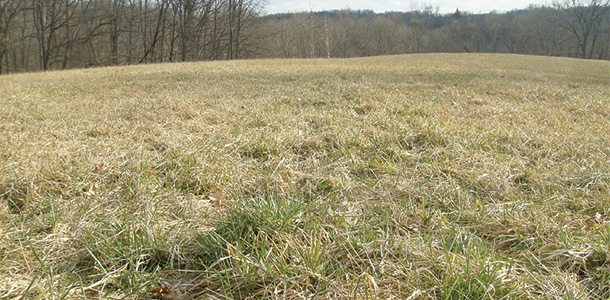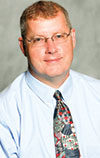Another option often overlooked is how soon we can stop feeding as spring approaches.
Over the years, there has been a lot of discussion on how early we can turn livestock out on cool-season pastures, and often it depends if you are looking from the forage or livestock perspective (or if you are out of hay).
If you have a healthy, productive pasture, you can turn out livestock as soon as the grass starts to green up. If you use rotational grazing, you can use a fast rotation or open up all the paddocks until the grass really takes off, then start rotational grazing.
One caution, especially with cattle, is to monitor the fields or paddocks closely during wet weather, as “pugging” can occur from hooves tramping moist sod.
Another strategy is to stockpile and graze predominantly grass hay fields or pastures. Each year, you can stockpile a field (set it aside to grow from the end of summer through the fall). Tall fescue is the best species to stockpile.
For me, in southeast Ohio, I take off two cuttings of hay in the summer, and instead of a third cutting, I let it stockpile or simply let it grow and set there until calving season starts in early March.

If the cows are in good condition and the forage is of good quality, the only feed they will get is the stockpiled fescue and a good salt and mineral mix.
If there are nutrition concerns, additional supplements can be added. Some years, I will feed some corn to cattle if the forage is not as good or the cows’ body condition is questionable.
There are four advantages to early grazing hay fields. First, there will be a clean, thick sod to calve on.
Second, according to University of Missouri research, the endophyte levels start dropping in fescue after freezing temperatures, and by the end of January, are low enough that they will not cause problems.
Third, if you are trying to introduce new species into a predominantly fescue sod, grazing down in March (or any time in the winter) and even exposing the soil will make it ideal for frost seeding and allowing other grasses and legumes to germinate. Finally, it is nice not to have to feed any more hay.
Early grazing hayfields has another advantage. It seems no matter how hard we try, many years we just can’t get hay made when we should (some are having success wrapping high-moisture bales early in the season).
If we have hayfields that were not grazed last fall, the option of turning them out in early spring has worked.
Try to estimate how much forage is available, the needs of the animals, minus estimated waste, to figure how many days are available. Then turn out the animals early and try to have the animals finish the hayfields when the pastures start growing.
Most years, this will work. Last year, I had to feed hay for five days in early April as the cattle got ahead of the pasture and the weather stayed cool longer than normal, but in many years, you could finish feeding hay two to four weeks earlier than normal.
A final advantage to early grazing hayfields is when you can’t get hay made when it should (in my part of Ohio, I should make hay in mid-May, but weather often delays that until June), early grazing will set back the hay a little and you will have a higher-quality first cutting. I try to finish early grazing of hayfields in mid- to late April.
I believe the key is to get the cattle off prior to stem elongation, and yield loss on the hayfields is usually minimal (when I compare it to similar fields I do not graze, I estimate a 20 percent loss but higher-quality hay).
One exception was several years ago when I finished grazing in mid-April, then we had less than 2 inches of rain until I mowed the hay in early June. That year, I estimated a 50 percent loss.
In 2012, I turned cattle out on a stockpiled field on March 3 for calving season, and the grass was the greenest for early March that I have seen it in my 30 years of raising cattle.
There was plenty to graze until the other paddocks were ready for a fast rotation by the end of March, and the cows had a nice, clean sod to calve on.
I am not sure if this is an option for you, but I can’t help but think of the saying, “It is the eye of the master that fattens the cattle,” and we need to keep thinking of ways to reduce costs while staying productive and environmentally responsible. With experience working with cattle and forages, this just may work for your operation. ![]()
PHOTOS
TOP: Cow grazing in a pasture
BOTTOM: Pasture for grazing. Photos provided by Chris Penrose

Associate Professor and Extension Educator Agriculture and Natural Resources
Ohio State University Extension











